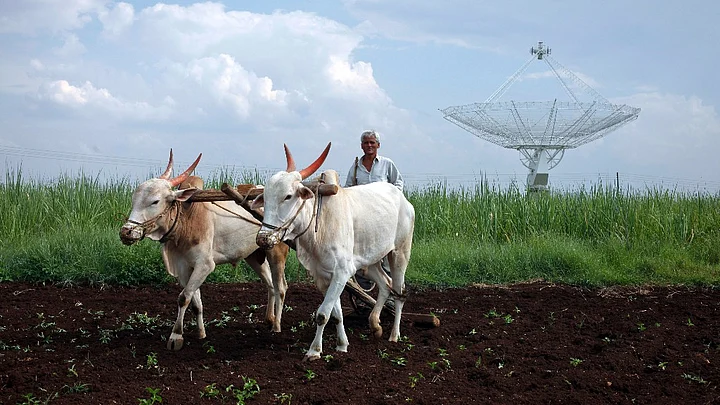- Prices of vegetables dipped 11 percent last fiscal
- The deflationary trend continues – Monday’s inflation data confirms that
- Data shows greater dependency of small and marginal farmers on growing vegetables
- The cost of production for small farmers is on the higher side, fall in price realisation pushes them into debt
Is there any connection between subdued consumer price inflation, basically a good piece of news in itself – and more so if accompanied by aggressive reduction in interest rates – and growing farmers’ protests in Madhya Pradesh and other states? Why should consumers complain if prices of essential items fall?
A careful analysis, however, reveals that there is a connection, and quite a depressing one at that.
A BloombergQuint analysis of the inflation data released on Monday shows that “all 12 categories within the food and beverage category have seen a fall in the rate of inflation.”
But the prices of vegetables and pulses have actually seen contraction – prices now are lower than what they were in the same month last year. “The sharpest fall has been seen in the indices for vegetables and pulses. Incidentally, both indices showed a steep correction following demonetisation in November,” writes Ira Dugal of BloombergQuint
Vegetable Prices in Free Fall for More Than a Year
The constant fall in prices of vegetables, not just in May but in many preceding months, has been a far bigger worry for small and marginal farmers than anything else. Data shows that wholesale prices of vegetables fell by nearly 11 percent in 2016-17 compared to 2015-16. Such a steep fall has not happened in years.
Analysing the recent price trend, Harish Damodaram writes in the Indian Express:
When was the last time we saw all three – potatoes, onions and tomatoes – wholesaling at less than Rs 5/kg, and even retail prices within Rs 20/kg? And this, in peak summer!
He concludes that “inflation eventually isn’t just a matter of the prices of goods and services going up or down. It is also about whose prices are rising and whose prices are falling – in other words, winners and losers. In the current deflationary environment, the farmers are the clear losers.”
Such a steep fall hits the most vulnerable sections the hardest. According to a 2012 research paper by S Mahendra Dev, noted economist and director of Mumbai-based Indira Gandhi Institute of Development Research:
“(a) small and marginal farmers allocate larger proportion of their cultivated land to high-value crops like fruits, and vegetables; (b) small and marginal farmers seem to have comparative advantage in growing vegetables than fruits because of quick returns in the former.”
Income From Vegetables Main Source of Income for Marginal Farmers
No wonder, small and marginal farmers contribute around 70 percent to the total production of vegetables in the country.
In other words, the main source of quick income for nearly 80 percent of farmers (98 million out of total 120 million farm holdings are small and marginal farmers) in the country is the production of vegetables.
If prices crash, farmers are bound to feel the heat.
Expenditure Exceeds Income in the Case of Marginal Farmers
Already reeling under the weight of growing indebtedness, falling prices have added to the woes of the majority of farmers.
Research shows that cost of cultivation for smaller holdings is at least 25 percent higher than medium and large holdings. While the average yield in value terms is slightly on the higher side for marginal farmers because of crop diversification, depression in price realised pushes them to the brink.
Mahendra Dev’s paper quotes a study that says that:
Consumption expenditure of marginal and small farmers exceeds their estimated income by a substantial margin and presumably the deficits have to be plugged by borrowing or other means.
Now that the income-expenditure gap is likely to have increased, despondent farmers have gone the agitation route.
The spread of agitation in low to bumper output states (Maharashtra and Madhya Pradesh, for instance) only shows that farmers need to be given better return on capital. The current deflationary environment is doing exactly the opposite.
Will a pan-India loan waiver package solve the problem? Very unlikely, for the simple reason that making credit easily available is just one of the several components of farming. The much bigger issue is of market access.
Can we do something like what Amul did to milk farmers – taking the burden of distribution completely away from farmers? This coupled with a plan in place to reskill farmers so that they are able to derive income from other sources (livestock could be one) will achieve the desirable outcome.
Now that we are used to saying Jai Jawan, can we do something about Jai Kisan also in right earnest?
